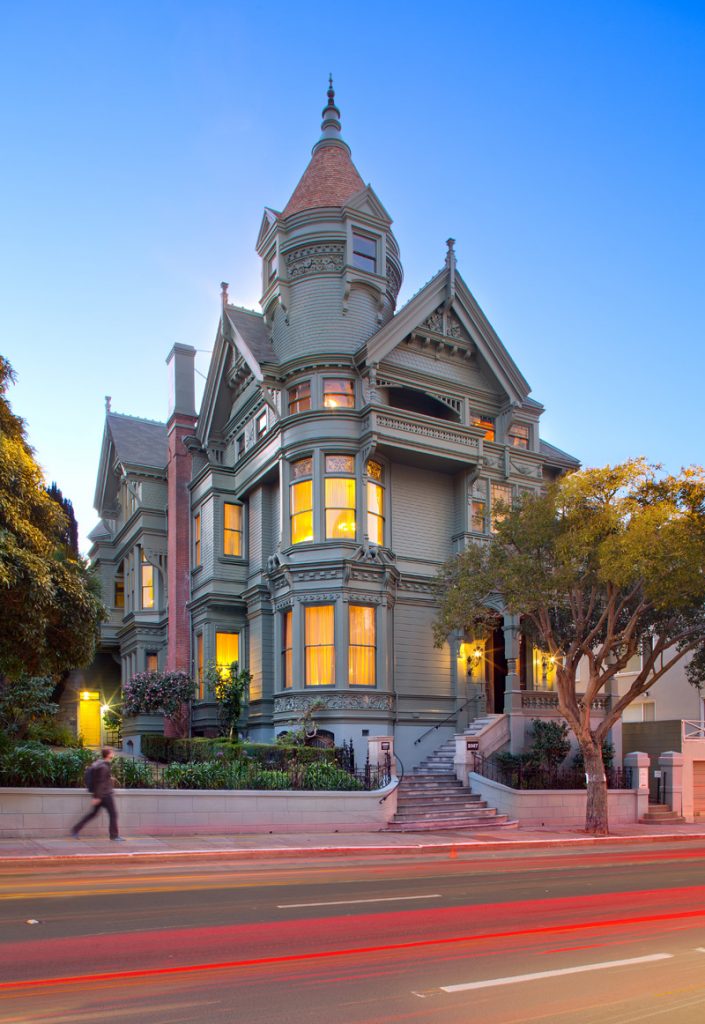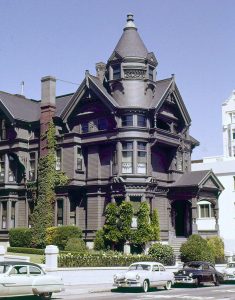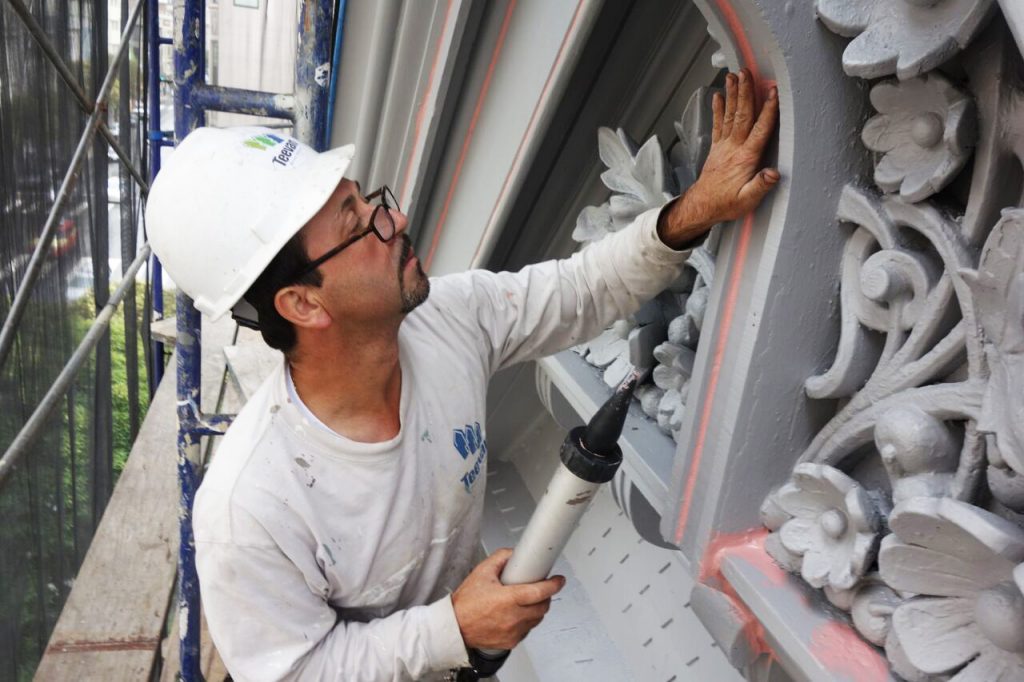THE HAAS-LILIENTHAL HOUSE at 2005 Franklin Street has a new paint job that returns the historic Victorian to its original, more subdued color palette.
To restore the historic integrity of the house, which now serves as its headquarters, San Francisco Heritage commissioned architectural conservator Molly Lambert to conduct a paint study to determine the original colors, patterns and sheens of the house. Lambert took 40 paint samples for microscopic testing, which can differentiate layers of primer, glaze, dirt and paint to identify the original colors.
“We don’t choose colors,” said Lambert. “They are there for us to discover.”
The results of Lambert’s study were unambiguous and consistent across all facades, stories and ornamental elements sampled. Before 1982, when the house was last repainted, the body color of the house had always been a monochromatic green-grey, with dark green-charcoal window trim. The study also revealed that the original 1886 body color and window trim were applied in glossy linseed oil paint. Lambert recommended a semi-gloss exterior paint for the body color and a gloss finish for the window trim to approximate the historic appearance.
A previous analysis conducted by architect Kenneth Cardwell in 1981 corroborated Lambert’s findings. Cardwell found the house was painted at least nine times in a monochromatic body color between 1886 and 1982. But he concluded there would be “no harm in choosing lighter tones as long as the value difference between the sash and the body paint is maintained.”
In 1982, Heritage retained longtime San Francisco Victorian color consultant Bob Buckter to recommend a new color scheme — while also seeking input from the National Trust for Historic Preservation, which holds a facade easement on the house, on “whether we go monochromatic grey or add more shades of grey to detail the ornamentation of the house.”
Correspondence from the time suggests that the process for selecting the house’s new colors was subject to intense scrutiny and debate. The Heritage board and staff ultimately decided on multiple shades of medium-to-light grey, with their final placement determined by a cadre of color consultants, architects and other interested parties.
Starting in August 2015, a team from contractor Teevan scraped, stripped, epoxied and replaced deteriorated woodwork based on detailed specifications developed by ARG Conservation Services.
As layers of paint were removed, the severity of damage quickly became apparent: Extensive dry rot had deteriorated the siding, structural elements and many intricate architectural details. Moisture infiltration threatened the strength and integrity of the wood siding and floral embellishments on the turret were missing petals.Teevan’s artisans and craftsmen worked to repair and reconstruct these elements.
Although the roof had been replaced in 2008, the prominent turret on the southeast corner of the house was not part of that project. Teevan discovered that multiple wood shingles on the south elevation were missing or paper-thin. Heritage replaced the turret roof with six-inch cedar shingles to match the original construction.
The next phase of the project will include repairing and repainting the north and west elevations, the large 1927 addition at the rear of the property and the wrought-iron fence in front of the house.
RESTORING AN ICON
San Francisco Heritage, the architectural preservation group that has called the Haas-Lilienthal House its home since 1973, is conducting a $4.3 million fundraising campaign to restore the house and enhance its endowment. More than $3 million has been raised and the most visible parts of the house have been repaired and painted in historically accurate monochromatic colors. For more information about the house and the campaign, visit SF Heritage or call 415-441-3000.
Filed under: Art & Design, Landmarks







